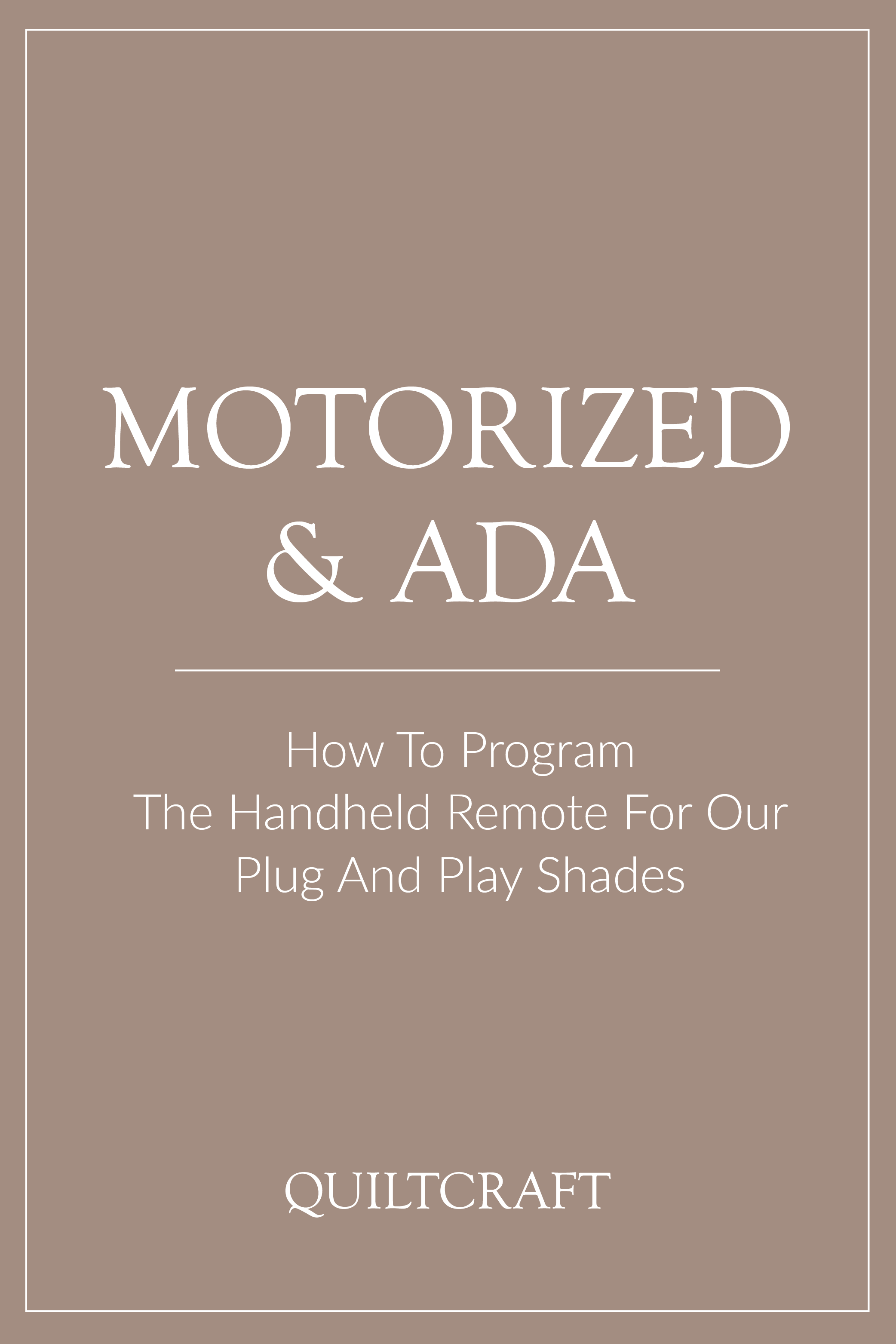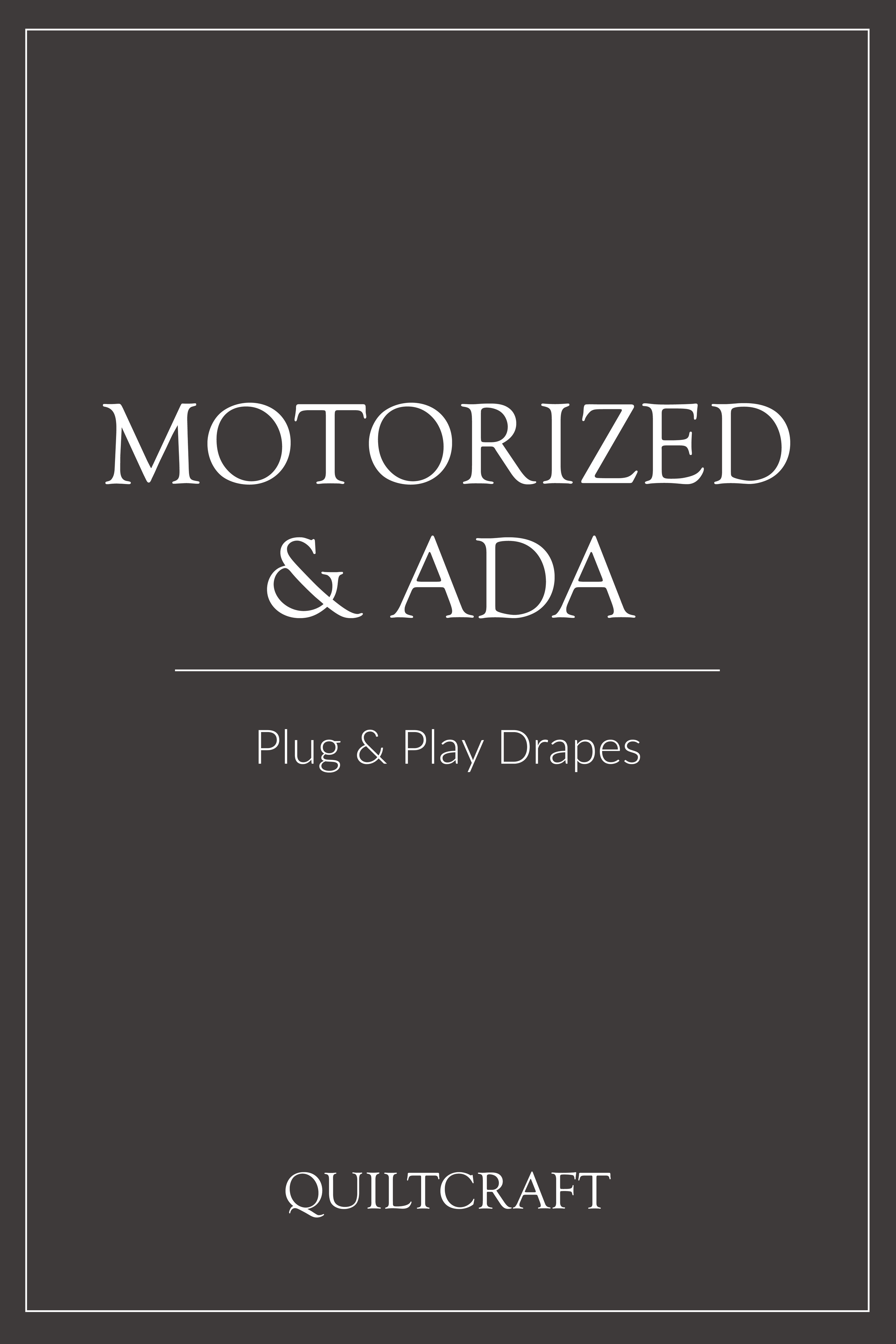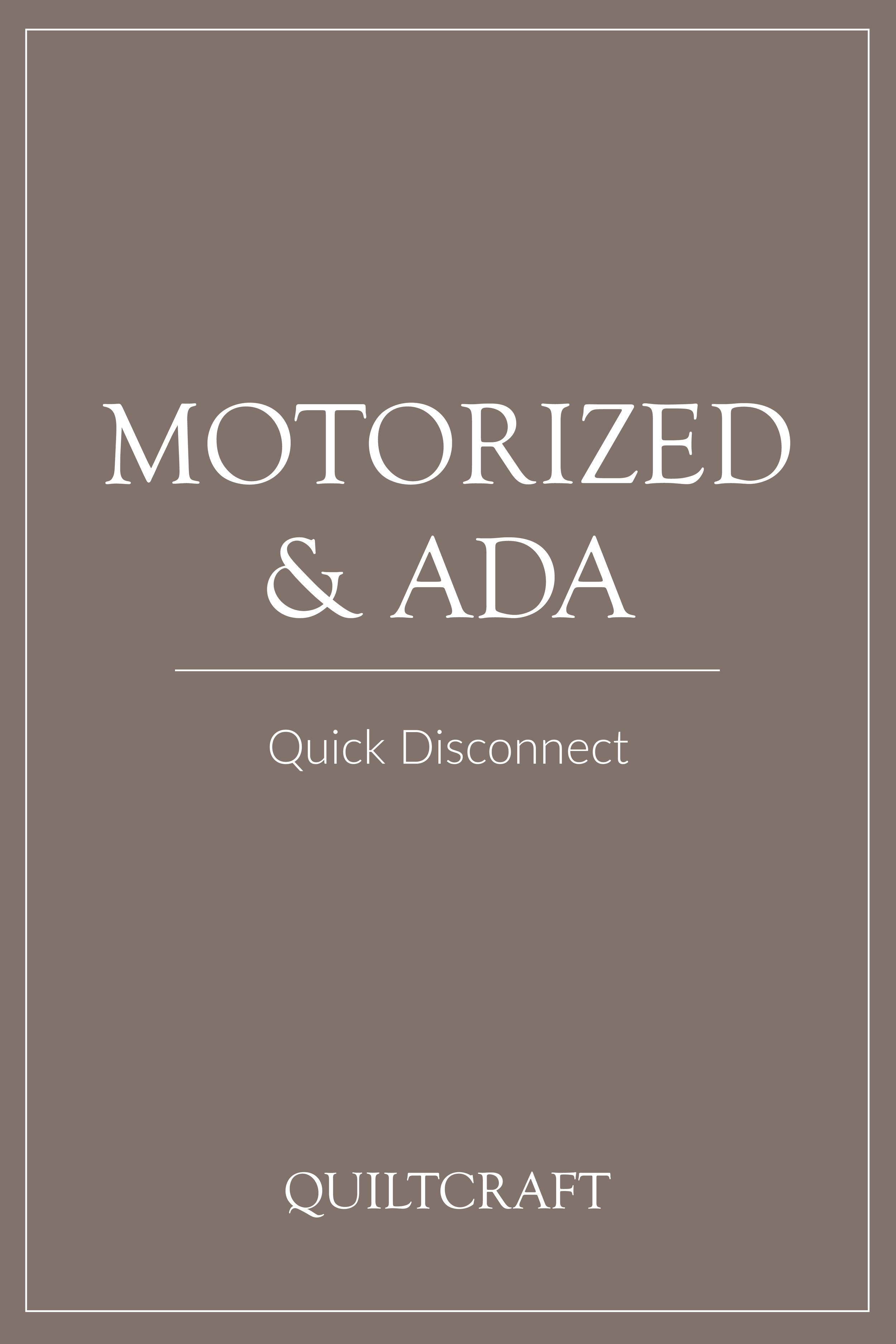ADA Code for Hospitality Window Treatments
The Americans with Disabilities Act is a highly complex and thick document. To wade through the entire thing would be a massive undertaking for anyone much less a busy designer, purchasing agent or hotel owner. The laws and guidelines within the document are crucial to a hotel’s legality in the eyes of the government and its honoring of those guests with disabilities. Therefore understanding what the document entails is extremely important regardless of how dense it is.
We daily receive specifications for guestrooms that do not adequately meet ADA standards, and the multiplicity of conversations that our Sales team has with clients on this topic, we thought we could boil down the crucial points of the ADA guideline as they affect hotel drapery.
We will discuss some of the why behind the guidelines, most emphatically we want to tell you what the guidelines are and what solutions exist for hotel drapery in order for your guestrooms to meet ADA requirements.
There are five main sections that offer guidelines on hospitality window treatments. We have listed each below, explained it & then offered a solution.
Section 9(1) Transient Lodging
“Includes facilities or portions thereof used for sleeping accommodations, when not classed as a medical care facility.”
This is the section of the ADA code that applies to hotels. As part of this section there are general guidelines for the number of ADA rooms required. Although this doesn’t immediately affect hotel drapery, it does apply to the overall ‘ADA compliant drapery treatments’ you will need so we have decided to include it. The following chart is directly pulled from the ADA code.
Section 9.2.2(5) Minimum Requirements
“All controls in accessible units, sleeping rooms, and suites shall comply with 4.27.”
The important aspect to note here is that everything that follows is only applicable to those rooms/units set aside for ADA guests. Public areas are not required to have controls or reach standards that meet this code.
Section 4.2.5 Forward Reach
“If the clear floor space only allows forward approach to an object, the maximum high forward reach allowed shall be 48 in (1220 mm). The minimum low forward reach is 15 in (320 mm). If the high forward reach is over an obstruction, reach and clearances shall be as shown in Fig. 5(b).”
Explanation is included below alongside 'Side Reach'.
Section 4.2.6 Side Reach
“If the clear floor space only allows parallel approach by a person in a wheelchair, the maximum high side reach allowed shall be 54 in (1370 mm) and the low side reach shall be no less than 9 in (230 mm) above the floor (Fig. 6(a) and (b)). If the side reach is over an obstruction, the reach and clearances shall be as shown in Fig. 6(c).
I’ve included the sections on Forward Reach & Side Reach together because as furniture layouts change and nothing in construction goes completely to plan we simply assume that forward reach is always the code that needs to be met. In doing so and using batons that hang within 48” of the floor we follow both codes and are always in the clear no matter if forward reach or side reach is available in a certain unit at any time.
Section 4.27.4 Operation
“Controls and operating mechanisms shall be operable with one hand and shall not require tight grasping, pinching, or twisting of the wrist. The forces required to activate controls shall be no greater than 5 lbf (22.2 N).”
Although this guideline is rather self-explanatory it can cause some confusion. The biggest point to remind yourself of is not to over complicate it namely because there are a couple of very easy solutions. You don’t need to rack your brain about what fits the code of ‘tight grasping, pinching… etc.’ there is an answer. Either you use a ADA looped baton, which allows you to move the drapery by simply inserting ‘something’ into the loop and pushing back and forth, or you make all treatments in ADA rooms motorized.
Hyatt Mission Bay | San Diego, CA
In Summary
Follow the ADA guidelines by providing ADA compliant units in relation to the number of total units at a property.
Follow ADA guidelines with usage of specific controls in those said rooms, namely...
When using manual drapery always specify ADA looped batons that will reach from mounting height to within 48” off the floor.
In lieu of using manual drapery, specify motorized drapery tracks with a remote.
When treating windows with roller shades, specify motorized roller shades with a remote.
Note that regular straight batons, cord drawn hardware, regular roller shade chain pulls and blinds are all not ADA compliant and therefore cannot be used in ADA guestrooms.
Hopefully this has brought to the forefront the information directly associated with hospitality window treatments as the ADA code applies to them. We’ve also created a downloadable Resource Card which provides this information in short. It would be a great resource to print or save a shortcut on your desktop for the next time you are writing a spec, purchasing product for a hotel, or preparing for your next renovation.
See More Motorized & ADA Resources










